The Color and Magnetic Properties of Urban Dust to Identify Contaminated Samples by Heavy Metals in Mexico City Metropolitan Area
Abstract
1. Introduction
2. Materials and Methods
2.1. Study Area
2.2. Sampling and Pretreatment of Urban Dust Samples
3. Results
3.1. The Color of Urban Dust Particles
3.2. Concentrations of Potentially Toxic Elements in Magnetic and Residual Particles
4. Discussion
5. Conclusions
Supplementary Materials
Author Contributions
Funding
Data Availability Statement
Acknowledgments
Conflicts of Interest
Abbreviations
| CPs | Complete Particles |
| MPs | Magnetic Particles |
| RPs | Residual Particles |
| RI | Redness Index |
| SI | Saturation Index |
| HI | Hue Index |
References
- WHO. Clean Air and Energy Access for Healthier Populations and Universal Health Coverage. 2023. Available online: https://cdn.who.int/media/docs/default-source/air-pollution-documents/air-quality-and-health/aqh_strategy_layout_v14_spreads.pdf?sfvrsn=918db48f_6&download=true (accessed on 7 August 2023).
- WHO. Air Pollution. 2023. Available online: https://www.who.int/health-topics/air-pollution#tab=tab_1 (accessed on 7 August 2023).
- Robledo Ardila, P.A.; Álvarez-Alonso, R.; Árcega-Cabrera, F.; Durán Valsero, J.J.; Morales García, R.; Lamas-Cosío, E.; Oceguera-Vargas, I.; DelValls, A. Assessment and Review of Heavy Metals Pollution in Sediments of the Mediterranean Sea. Appl. Sci. 2024, 14, 1435. [Google Scholar] [CrossRef]
- Briffa, J.; Sinagra, E.; Blundell, R. Heavy metal pollution in the environment and their toxicological effects on humans. Heliyon 2020, 6, e04691. [Google Scholar] [CrossRef] [PubMed]
- Calderón-Garcidueñas, L.; Ayala, A.; Mukherjee, P.S. United States Elections: Air Pollution, Neurodegeneration, Neuropsychiatric, and Neurodevelopmental Disorders. Who Cares? J. Alzheimer’s Dis. 2024, 98, 1277–1282. [Google Scholar]
- Calderón-Garcidueñas, L.; Cejudo-Ruiz, F.R.; Stommel, E.W.; González-Maciel, A.; Reynoso-Robles, R.; Torres-Jardón, R.; Tehuacanero-Cuapa, S.; Rodríguez-Gómez, A.; Bautista, F.; Goguitchaichvili, A.; et al. Single-domain magnetic particles with motion behavior under electromagnetic AC and DC fields are a fatal cargo in Metropolitan Mexico City pediatric and young adult early Alzheimer, Parkinson, frontotemporal lobar degeneration and amyotrophic lateral sclerosis and in ALS patients. Front. Hum. Neurosci. 2024, 18, 1411849. [Google Scholar] [CrossRef]
- Maher, B. Ubiquitous magnetite. Nat. Geosci. 2024, 17, 7. [Google Scholar]
- Calderón-Garcidueñas, L.; González-Maciel, A.; Mukherjee, P.S.; Reynoso-Robles, R.; Pérez-Guillé, B.; Gayosso-Chávez, C.; Torres-Jardón, R.; Cross, J.V.; Ahmed, I.A.; Karloukovski, V.V.; et al. Combustion-and friction-derived magnetic air pollution nanoparticles in human hearts. Environ. Res. 2019, 176, 108567. [Google Scholar]
- Jomova, K.; Alomar, S.Y.; Nepovimova, E.; Kuca, K.; Valko, M. Heavy metals: Toxicity and human health effects. Arch. Toxicol. 2024, 99, 153–209. [Google Scholar]
- Hammond, J.; Maher, B.A.; Gonet, T.; Bautista, F.; Allsop, D. Oxidative Stress, Cytotoxic and Inflammatory Effects of Urban Ultrafine Road-Deposited Dust from the UK and Mexico in Human Epithelial Lung (Calu-3) Cells. Antioxidants 2022, 11, 1814. [Google Scholar] [CrossRef]
- Aguilera, A.; Bautista, F.; Goguitchaichvili, A.; Garcia-Oliva, F. Health risk of heavy metals in street dust. Front. Biosci. 2021, 26, 327–345. [Google Scholar]
- Feißel, T.; Hesse, D.; Augustin, M.; Carl, D.; Kneisel, M.; Ritter, C. Regulation of brake particle emissions by Euro 7-requirements and trends in future chassis development. In International Munich Chassis Symposium; Springer: Berlin/Heidelberg, Germany, 2023; pp. 51–68. [Google Scholar]
- Xue, S.; Ke, W.; Zeng, J.; Tabelin, C.B.; Xie, Y.; Tang, L.; Xiang, C.; Jiang, J. Pollution prediction for heavy metals in soil-groundwater systems at smelting sites. Chem. Eng. J. 2023, 473, 145499. [Google Scholar]
- Roy, A.; Jha, A.K.; Kumar, A.; Bhattacharya, T.; Chakraborty, S.; Raval, N.P.; Kumar, M. Heavy metal pollution in indoor dust of residential, commercial, and industrial areas: A review of evolutionary trends. Air Qual. Atmos. Health 2024, 17, 891–918. [Google Scholar]
- Delgado-Iniesta, M.J.; Marín-Sanleandro, P.; Canca Pedraza, M.D.; Díaz-Pereira, E.; Sánchez-Navarro, A. Geoenvironmental and Health Indices to Assess the Hazardousness of Heavy Metals in Urban Dust in Schoolyards in Murcia, Spain. Toxics 2024, 12, 804. [Google Scholar] [CrossRef] [PubMed]
- Szczepaniak-Wnuk, I.; Górka-Kostrubiec, B. Magnetic particles in indoor dust as marker of pollution emitted by different outside sources. Stud. Geophys. Geod. 2016, 60, 297–315. [Google Scholar]
- Hu, X.F.; Li, M.; He, Z.C.; Cui, L.; Liu, R.; Wang, X.D.; Wang, Z.H. Magnetic responses to heavy metal pollution of the industrial soils in Shanghai: Implying the influences of anthropogenic magnetic dustfall on urban environment. J. Appl. Geophys. 2022, 197, 104544. [Google Scholar]
- Cortés, J.L.; Bautista, F.; Quintana, P.; Aguilar, D.; Goguichaishvili, A. The color of urban dust as an indicator of contamination by potentially toxic elements: The case of Ensenada, Baja California, Mexico. Rev. Chapingo Ser. Cienc. For. Ambiente 2015, 21, 255–266. [Google Scholar]
- Delgado-Iniesta, M.J.; Marín-Sanleandro, P.; Díaz-Pereira, E.; Bautista, F.; Romero-Muñoz, M.; Sánchez-Navarro, A. Assessment of Heavy Metals and Color as Indicators of Contamination in Street Dust of a City in SE Spain: Influence of Traffic Intensity and Sampling Location. Sustainability 2018, 10, 4105. [Google Scholar] [CrossRef]
- Aguilar, Y.; Bautista, F.; Quintana, P.; Aguilar, D.; Trejo-Tzab, R.; Goguitchaichvili, A.; Chan-Te, R. Color as a New Indirect Technique for the Identification of Road Dust Samples Contaminated with Potentially Toxic Elements: The Case of Mérida, Yucatán, Mexico. Atmosphere 2021, 12, 483. [Google Scholar] [CrossRef]
- Maher, B.A. Airborne magnetite-and iron-rich pollution nanoparticles: Potential neurotoxicants and environmental risk factors for neurodegenerative disease, including Alzheimer’s disease. J. Alzheimers Dis. 2019, 71, 361–375. [Google Scholar]
- Aguilera, A.; Morales, J.J.; Goguitchaichvili, A.; García-Oliva, F.; Armendariz-Arnez, C.; Quintana, P.; Bautista, F. Spatial distribution of magnetic material in urban road dust classified by land use and type of road in San Luis Potosí, Mexico. Air Qual. Atmos. Health 2020, 13, 951–963. [Google Scholar] [CrossRef]
- UN DESA. World Urbanization Prospects. The 2018 Revision. New York. 2019. Available online: http://www.demographicresearch.org/volumes/vol12/9/ (accessed on 8 February 2025).
- INEGI. Geología. Available online: https://www.inegi.org.mx/temas/geología (accessed on 8 February 2024).
- INEGI. Uso de Suelo y Vegetación. Available online: https://www.inegi.org.mx/temas/usosuelo/ (accessed on 8 February 2024).
- Viscarra-Rossel, R.A.; Fouad, Y.; Walter, C. Using a Digital Camera to Measure Soil Organic Carbon and Iron Contents. Biosyst. Eng. 2008, 100, 149–159. [Google Scholar] [CrossRef]
- Wyszecki, G.; Stiles, W.S. Color Science: Concepts and Methods, Quantitative Data and Formulae, 2nd ed.; Wiley: New York, NY, USA, 1982. [Google Scholar]
- Viscarra-Rossel, R.A.; Minasny, B.; Roudier, P.; McBratney, A.B. Colour Space Models for Soil Science. Geoderma 2006, 133, 320–337. [Google Scholar] [CrossRef]
- Method 6200: Field Portable X-Ray Fluorescence Spectrometry for the Determination of Element Concentration. US-EPA. Available online: https://www.epa.gov/sites/default/files/2015-12/documents/6200.pdf (accessed on 17 February 2024).
- Skyray Instruments. Genius 7000 XRF: Heavy Metals in Soil Handheld Analyzer, 1st ed.; Skyray Instruments: Jiangsu, China, 2019; pp. 15–16. [Google Scholar]
- Lozano, R.; Bernal, J.P. Characterization of a New Set of Eight Geochemical Reference Materials for XRF Major and Trace Element Analysis. Rev. Mex. Cienc. Geol. 2005, 22, 329–344. [Google Scholar]
- Torrent, J.; Barron, V.; Liu, Q. Magnetic Enhancement Is Linked to and Precedes Hematite Formation in Aerobic Soil. Geophys. Res. Lett. 2006, 33, 1–4. [Google Scholar] [CrossRef]
- Levin, N.; Ben-Dor, E.; Singer, A. A Digital Camera as a Tool to Measure Colour Indices and Related Properties of Sandy Soils in Semi-Arid Environments. Int. J. Remote Sens. 2005, 26, 5475–5492. [Google Scholar] [CrossRef]
- García, R.; Delgado, C.; Cejudo, R.; Aguilera, A.; Gogichaishvili, A.; Bautista, F. The color of urban dust as an indicator of heavy metal pollution. Rev. Chapingo Ser. Cienc. For. Ambiente 2020, 26, 3–15. [Google Scholar] [CrossRef]
- Bautista, F.; Goguitchaichvili, A.; Delgado, F.; Quintana, P.; Aguilar, D.; Cejudo, R.; Cortés, J. El color como indicador de contaminación por metales pesados en suelos de la Ciudad de México. Bol. Soc. Geol. Mex 2021, 73, A210920. [Google Scholar] [CrossRef]
- Schmidt, S.A.; Ahn, C. Predicting forested wetland soil carbon using quantitative color sensor measurements in the region of northern Virginia, USA. J. Environ. Manag. 2021, 300, 113823. [Google Scholar] [CrossRef]
- Morozzi, P.; Ballarin, B.; Arcozzi, S.; Brattich, E.; Lucarelli, F.; Nava, S.; Gómez-Cascales, P.J.; Orza, J.A.; Tositti, L. Ultraviolet–Visible Diffuse Reflectance Spectroscopy (UV–Vis DRS), a rapid and non-destructive analytical tool for the identification of Saharan dust events in particulate matter filters. Atmos. Environ. 2021, 252, 118297. [Google Scholar] [CrossRef]
- Guo, X.; Tian, Z.; Zhao, Y.; Su, X. Impact of urban air pollutants on the night sky brightness and color in Hohhot. Sustain. Cities Soc. 2023, 96, 104671. [Google Scholar] [CrossRef]
- McRae, N.; Bello, G.; Svensson, K.; Solano-González, M.; Wright, R.J.; Niedzwiecki, M.M.; Torres-Calapiz, M.; Amarasiriwardena, C.; Schnaas, L.; Tamayo-Ortiz, M.; et al. Blood manganese levels during pregnancy and postpartum depression: A cohort study among women in Mexico. NeuroToxicology 2020, 76, 83–190. [Google Scholar] [CrossRef]
- Hernández-Bonilla, D.; Schilmann, A.; Montes, S.; Rodríguez-Agudelo, Y.; Rodríguez-Dozal, S.; Solís-Vivanco, R.; Ríos, C.; Rojas-Rodríguez, H. Environmental exposure to manganese and motor function of children in Mexico. NeuroToxicology 2011, 32, 615–621. [Google Scholar] [CrossRef] [PubMed]
- Ramírez-Ayala, R.; Azcona-Cruz, M.I. Efectos tóxicos del manganeso. Rev. Esp. Med-Quir. 2017, 22, 71–75. Available online: https://www.medigraphic.com/pdfs/quirurgicas/rmq-2017/rmq172d.pdf (accessed on 8 February 2024).
- Aguilera, A.; Bautista, F.; Gogichaishvili, A.; Gutiérrez-Ruiz, M.E.; Ceniceros-Gómez, A.E.; López-Santiago, N.R. Spatial distribution of manganese concentration and load in street dust in Mexico City. Salud Publica Mex. 2020, 62, 147–155. [Google Scholar] [CrossRef] [PubMed]
- Ng, N.; Wan Ibrahim, W.A.; Sutirman, Z.A.; Sanagi, M.M.; Abdul Keyon, A.S. Magnetic nanomaterials for preconcentration and removal of emerging contaminants in the water environment. Nanotechnol. Environ. Eng. 2023, 8, 297–315. [Google Scholar] [CrossRef]
- Maher, B.A.; Ahmed, I.A.; Karloukovski, V.; MacLaren, D.A.; Foulds, P.G.; Allsop, D.; Mann, D.M.; Torres-Jardón, R.; Calderon-Garciduenas, L. Magnetite pollution nanoparticles in the human brain. Proc. Natl. Acad. Sci. USA 2016, 113, 10797–10801. [Google Scholar] [CrossRef]
- Coccini, T.; Caloni, F.; Ramirez Cando, L.J.; De Simone, U. Cytotoxicity and proliferative capacity impairment induced on human brain cell cultures after short-and long-term exposure to magnetite nanoparticles. J. Appl. Toxicol. 2017, 37, 361–373. [Google Scholar] [CrossRef]
- Collingwood, J.F.; Telling, N.D. Iron oxides in the human brain. In Iron Oxides: From Nature to Applications; Faivre, D., Ed.; John Wiley & Sons: Berlin, Germany, 2016; pp. 143–176. [Google Scholar]

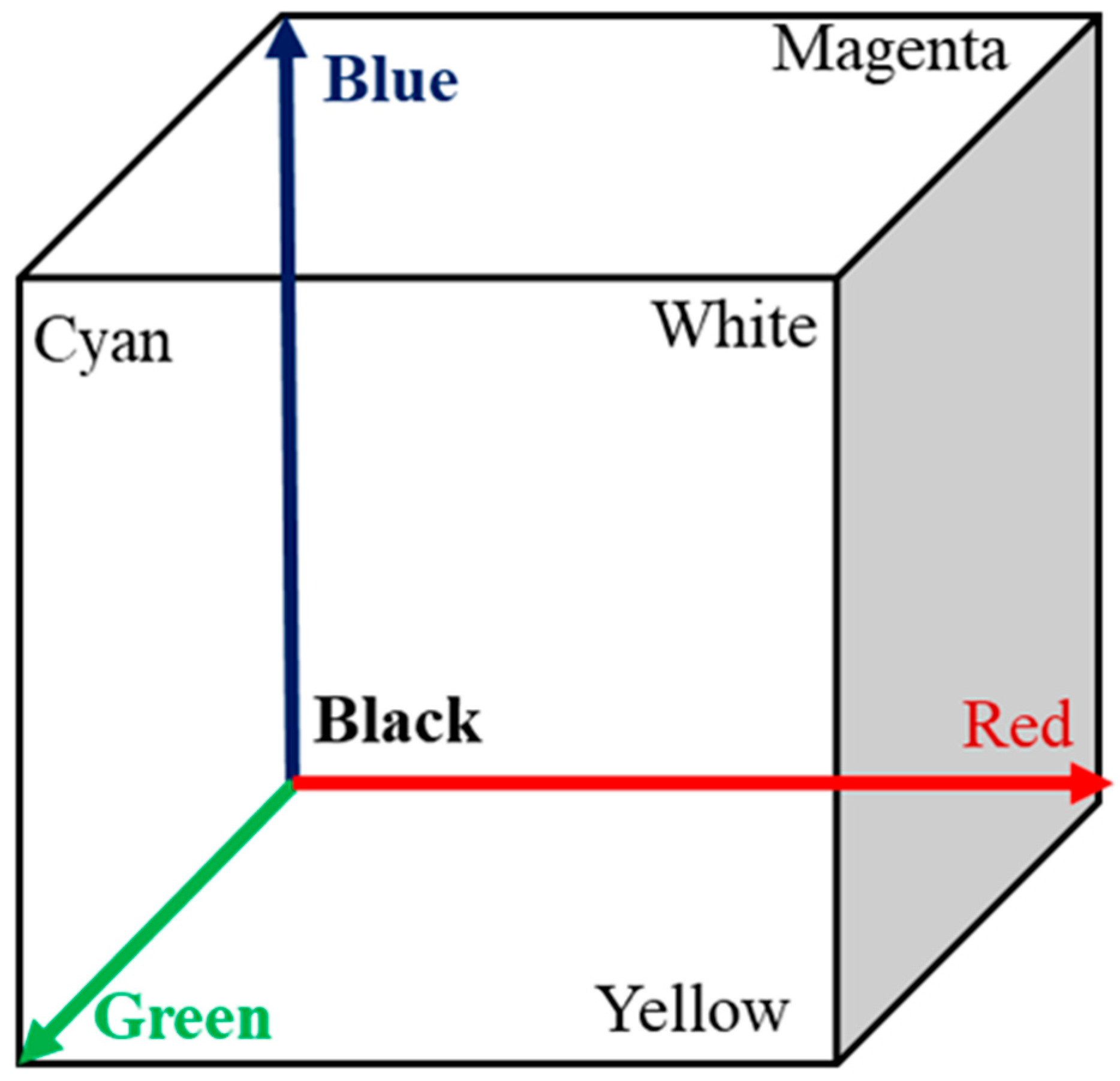


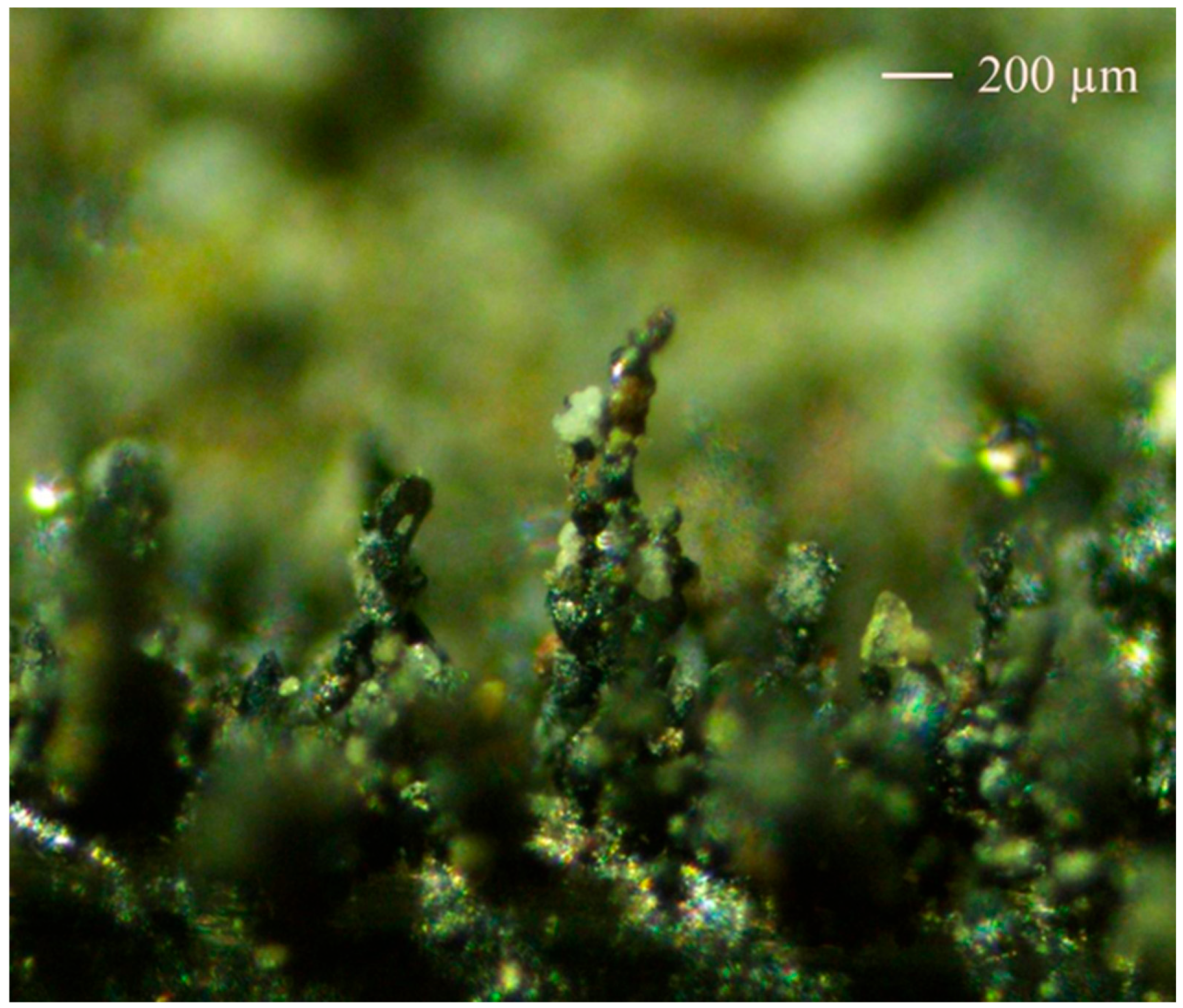
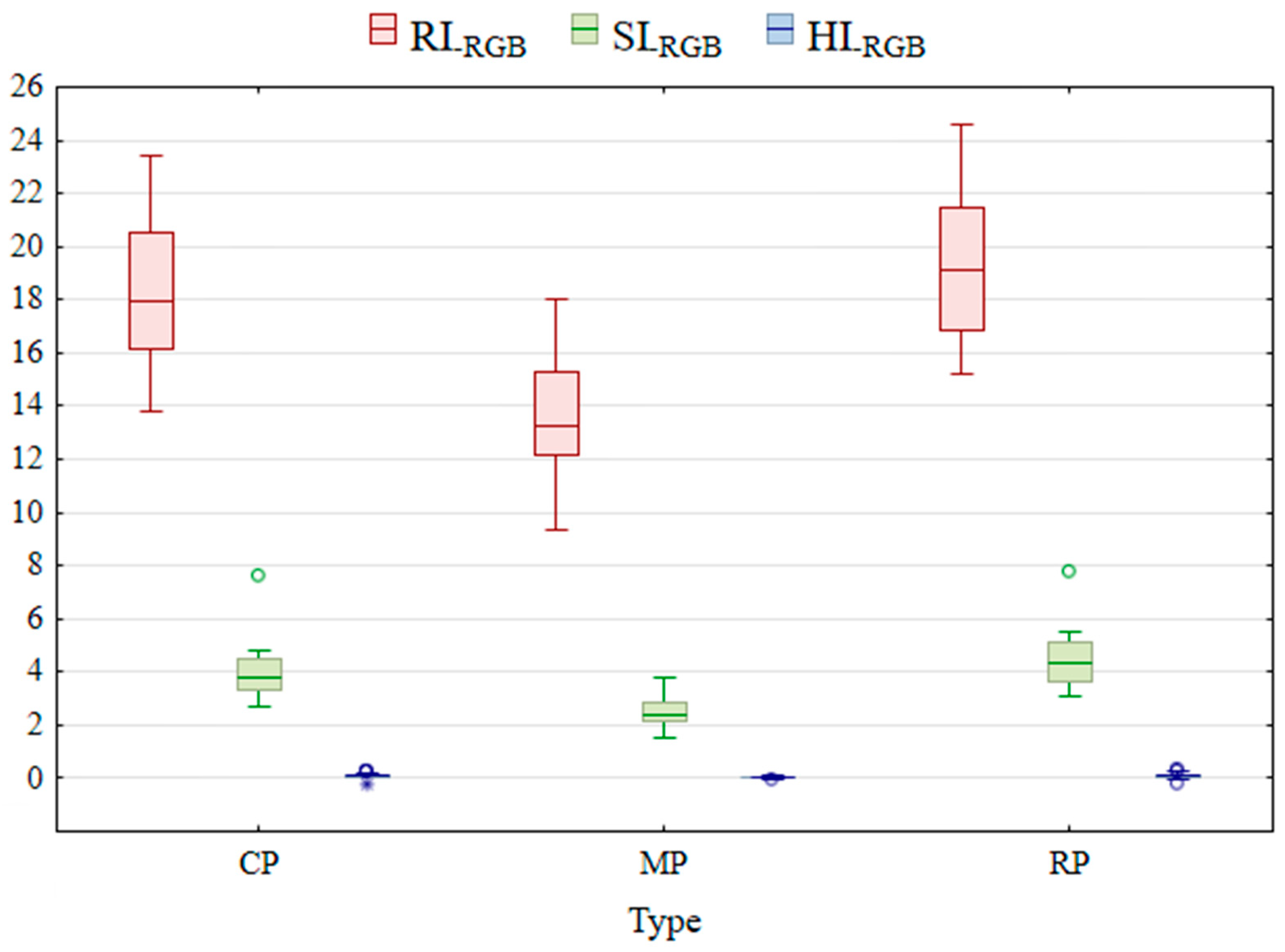
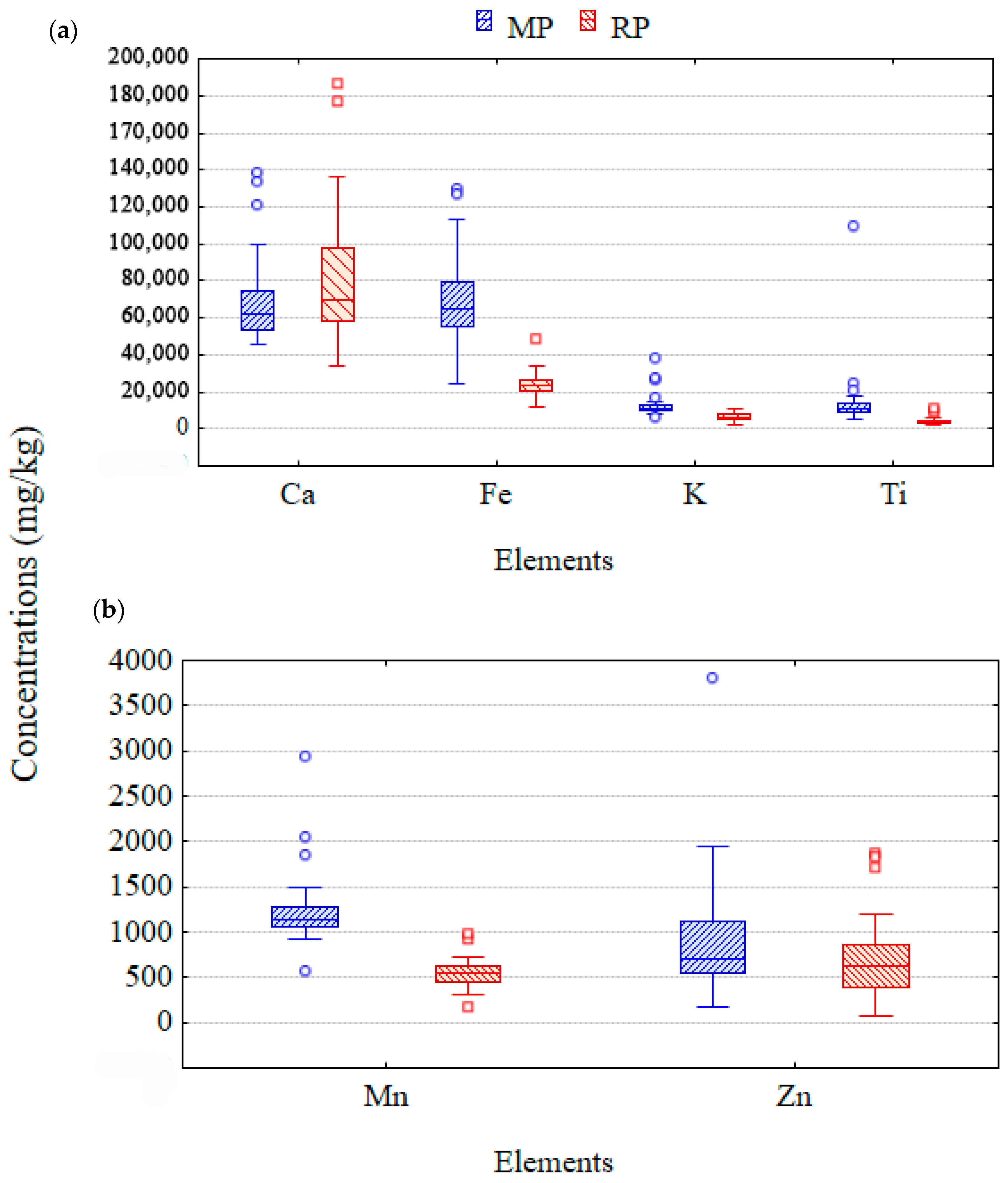
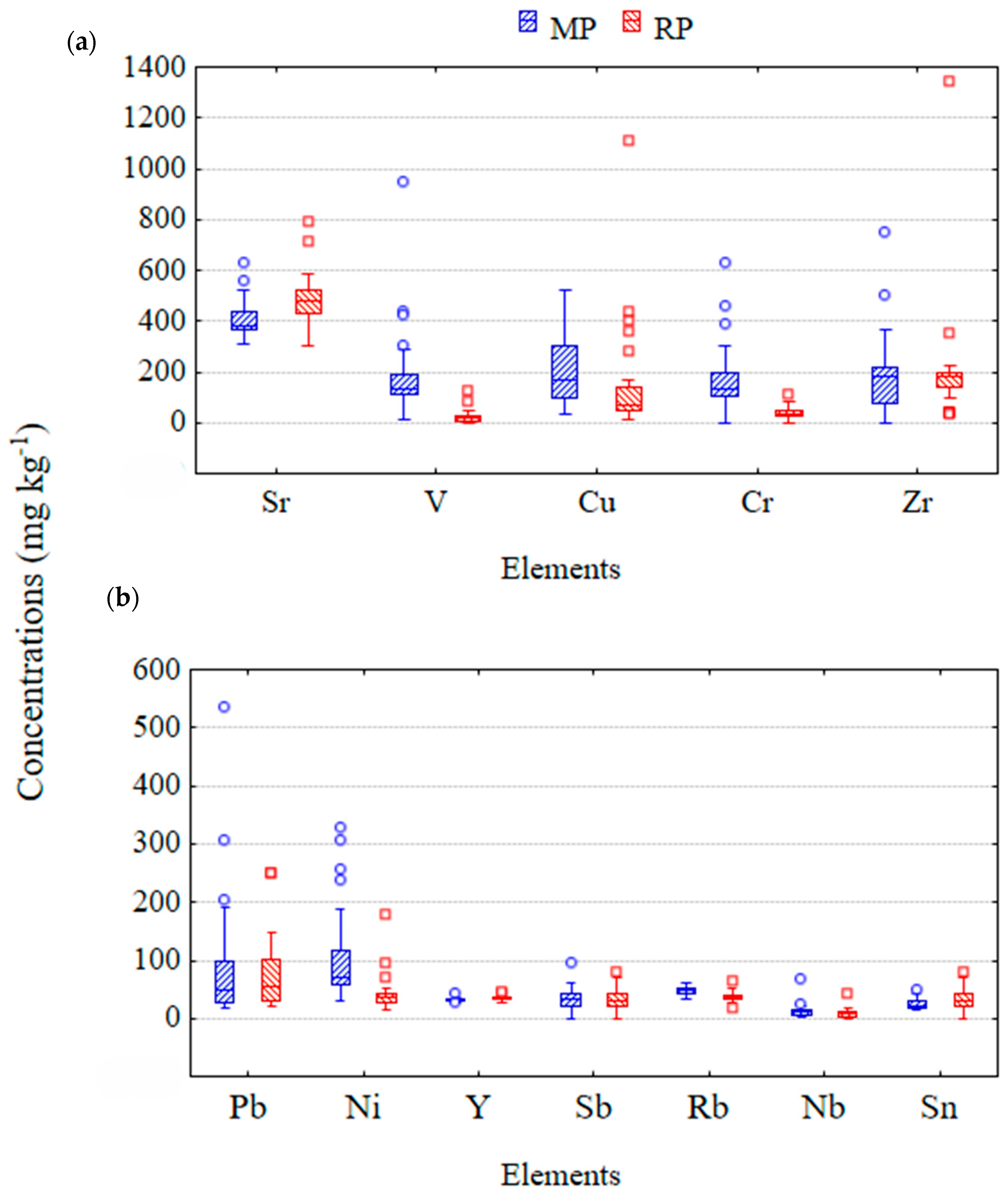
Disclaimer/Publisher’s Note: The statements, opinions and data contained in all publications are solely those of the individual author(s) and contributor(s) and not of MDPI and/or the editor(s). MDPI and/or the editor(s) disclaim responsibility for any injury to people or property resulting from any ideas, methods, instructions or products referred to in the content. |
© 2025 by the authors. Licensee MDPI, Basel, Switzerland. This article is an open access article distributed under the terms and conditions of the Creative Commons Attribution (CC BY) license (https://creativecommons.org/licenses/by/4.0/).
Share and Cite
Méndez-Sánchez, A.; Gallegos, Á.; García, R.; Cejudo, R.; Goguitchaichvili, A.; Bautista, F. The Color and Magnetic Properties of Urban Dust to Identify Contaminated Samples by Heavy Metals in Mexico City Metropolitan Area. Atmosphere 2025, 16, 374. https://doi.org/10.3390/atmos16040374
Méndez-Sánchez A, Gallegos Á, García R, Cejudo R, Goguitchaichvili A, Bautista F. The Color and Magnetic Properties of Urban Dust to Identify Contaminated Samples by Heavy Metals in Mexico City Metropolitan Area. Atmosphere. 2025; 16(4):374. https://doi.org/10.3390/atmos16040374
Chicago/Turabian StyleMéndez-Sánchez, Alexandra, Ángeles Gallegos, Rafael García, Rubén Cejudo, Avto Goguitchaichvili, and Francisco Bautista. 2025. "The Color and Magnetic Properties of Urban Dust to Identify Contaminated Samples by Heavy Metals in Mexico City Metropolitan Area" Atmosphere 16, no. 4: 374. https://doi.org/10.3390/atmos16040374
APA StyleMéndez-Sánchez, A., Gallegos, Á., García, R., Cejudo, R., Goguitchaichvili, A., & Bautista, F. (2025). The Color and Magnetic Properties of Urban Dust to Identify Contaminated Samples by Heavy Metals in Mexico City Metropolitan Area. Atmosphere, 16(4), 374. https://doi.org/10.3390/atmos16040374






